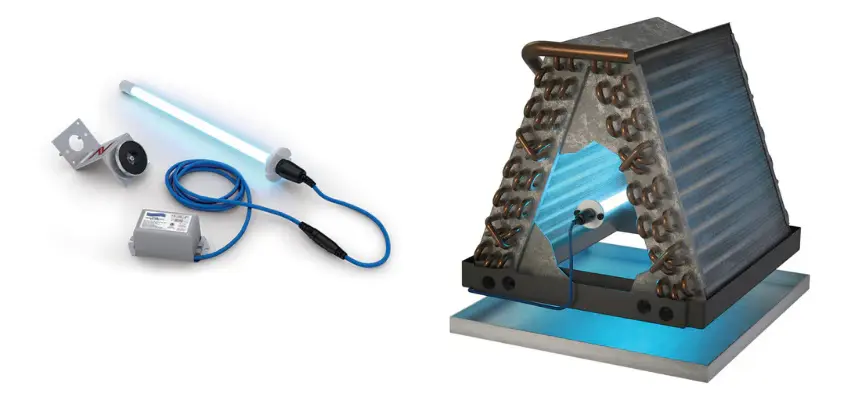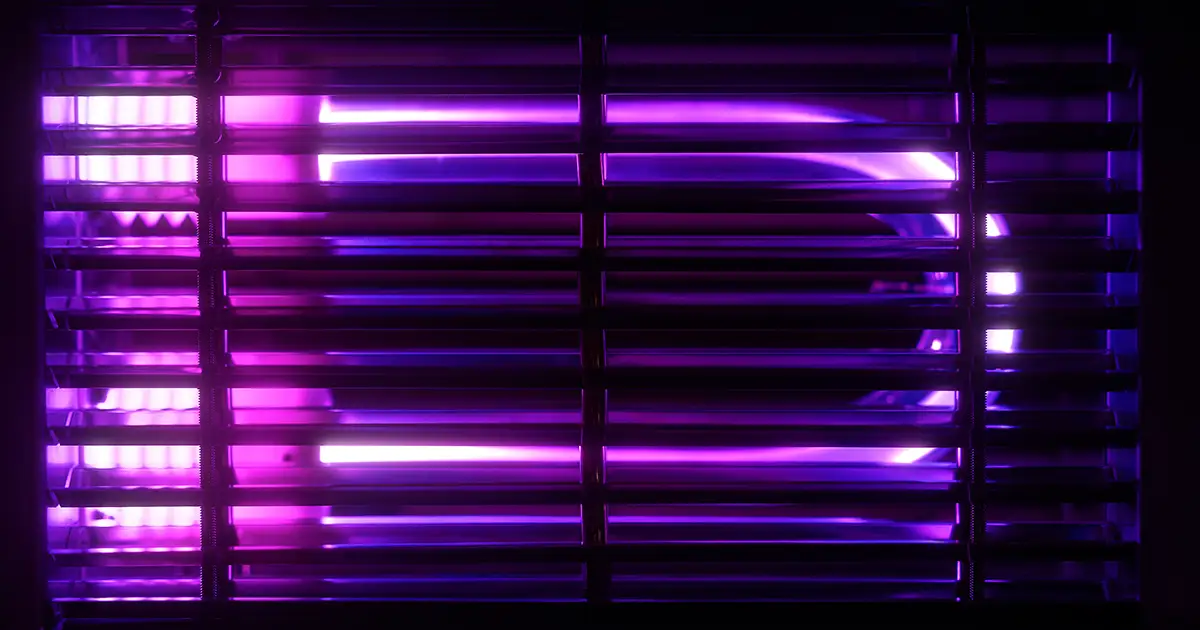Winter in North Texas means more time locked inside with the heater running. And that’s when most folks start noticing the air feels stale, allergies act up, or someone in the house can’t shake a cold. Here’s the thing: the air inside your home is often more polluted than what’s floating around outside. Dust, pet dander, mold spores, viruses all get trapped and recycled through your HVAC system over and over.
UV light technology offers a way to break that cycle. It’s not some gimmick. Hospitals and water treatment plants have been using it for years. Now homeowners can tap into the same science to clean up their indoor air and keep their families healthier.
What UV Lights Actually Do
Ultraviolet light disrupts the DNA of bacteria, viruses, mold spores, and other microorganisms. When installed in your HVAC system, these lights zap airborne pathogens as they pass through, stopping them from spreading or multiplying.
The specific wavelength that does the heavy lifting is UVC at 254 nanometers. It doesn’t occur naturally at ground level because the ozone layer filters it out, but you can harness it safely inside your ductwork or air handler. Once exposed to UVC, those germs lose their ability to reproduce or infect. They’re essentially neutralized.
This same technology has been trusted in medical facilities for decades. Now it’s available for your home.
How HVAC UV Systems Work
You’ve got two main options: standalone units for individual rooms or whole-home systems integrated into your HVAC. If you want serious protection, the whole-home route is the way to go.
In-duct UV lights are typically installed near the evaporator coil or inside the air handler. These spots tend to stay damp from condensation, which makes them prime real estate for mold and bacteria. Every time your system runs, air gets blasted with UVC light before it circulates back into your living space.
Some advanced systems like the REME HALO® take it further by releasing hydroperoxides into the air. These molecules keep working even after they leave the light source, attacking odors, bacteria, viruses, and volatile organic compounds throughout your home.
Other UV purifiers use Photocatalytic Oxidation (PCO) to produce hydrogen peroxide—a compound with a long track record in disinfection. It’s powerful stuff, but safe when generated at the right levels.

Why You Should Consider Adding UV Lights
Once installed, UV lights operate quietly in the background. You won’t hear them or see them, but you’ll notice the difference in your air quality and possibly your energy bills.
If anyone in your household deals with allergies, asthma, or frequent respiratory infections, UV can help reduce triggers and cut down on sick days. By killing off airborne pathogens, the system lowers your exposure to things that make you sneeze, cough, or worse.
Beyond health benefits, UV lights help your HVAC run better. Mold and bacteria love to build up on your evaporator coil, restricting airflow and causing funky smells. When left unchecked, that buildup forces your system to work harder, which means higher energy costs and more frequent breakdowns. UV lights prevent that growth at the source, keeping components cleaner and extending the life of your equipment.
What You Need to Know About Safety
Not all UV systems are created equal. Some cheap or poorly designed units produce ozone as a byproduct, which can irritate your lungs. Ozone forms when UV lights emit wavelengths below 200 nm, like 185 nm. To avoid that problem, look for systems certified as ozone-free.
Another concern is direct exposure. UVC light can damage skin and eyes, but residential systems are designed to stay sealed inside your ductwork or air handler. When installed correctly, there’s zero risk to you, your kids, or your pets.
Maintenance is straightforward. Most UV bulbs last one to two years before they need replacing. Some systems have built-in alerts to let you know when it’s time for a fresh bulb. That’s it. No complicated upkeep.
The Reality of Air Purification
UV lights are excellent at neutralizing live contaminants like bacteria and viruses. But they don’t capture particles such as dust, pollen, or pet hair. That’s where filtration comes in.
For the best results, pair your UV system with a high-quality MERV-rated filter that your HVAC can handle without straining. Regular duct cleaning and timely filter changes work hand-in-hand with UV to deliver cleaner air.
Placement matters too. Air needs to pass close enough to the UV light for long enough to get sanitized. If your system has high air velocity—say, 800 feet per minute or more—you’ll need a stronger UV dosage to compensate. That’s why professional installation is critical. It’s not just about screwing in a bulb. It’s about understanding airflow, exposure time, and system compatibility.
Does It Make Sense for DFW Homeowners?
Dallas-Fort Worth has brutal pollen seasons and frequent air quality alerts. Add in cold winters when everyone’s cooped up indoors, and you’ve got a recipe for recirculating germs and allergens all day long.
UV lights give you an advantage, especially if you’ve got young kids, elderly family members, or anyone with breathing issues. You spend most of your time at home breathing air that cycles through your HVAC multiple times a day. Might as well make sure it’s as clean as possible.
There’s a financial angle too. Cleaner HVAC components perform better and last longer. That means fewer emergency repair calls, less dust blowing out of your vents, and a more comfortable home year-round. Over time, those savings add up.
Final Thoughts
Adding UV to your HVAC doesn’t have to be complicated. A licensed technician can assess your system, recommend the right type of UV light for your home, and handle the installation safely. After that, maintenance is minimal—usually just a bulb swap during your routine HVAC checkup.
If you’re serious about improving your indoor air quality or want extra protection during cold and flu season, UV lights are one of the smartest upgrades available. They work silently in the background, and the payoff in health and comfort is real.
Want to know more about how HVAC-integrated UV lights can fit into your home? Contact us today at (972) 278-6800. We’ll walk you through your options, answer your questions, and take care of everything from selection to installation.
Breathe easier. Stay healthier. Let AC Rescue help you take control of your indoor air.

